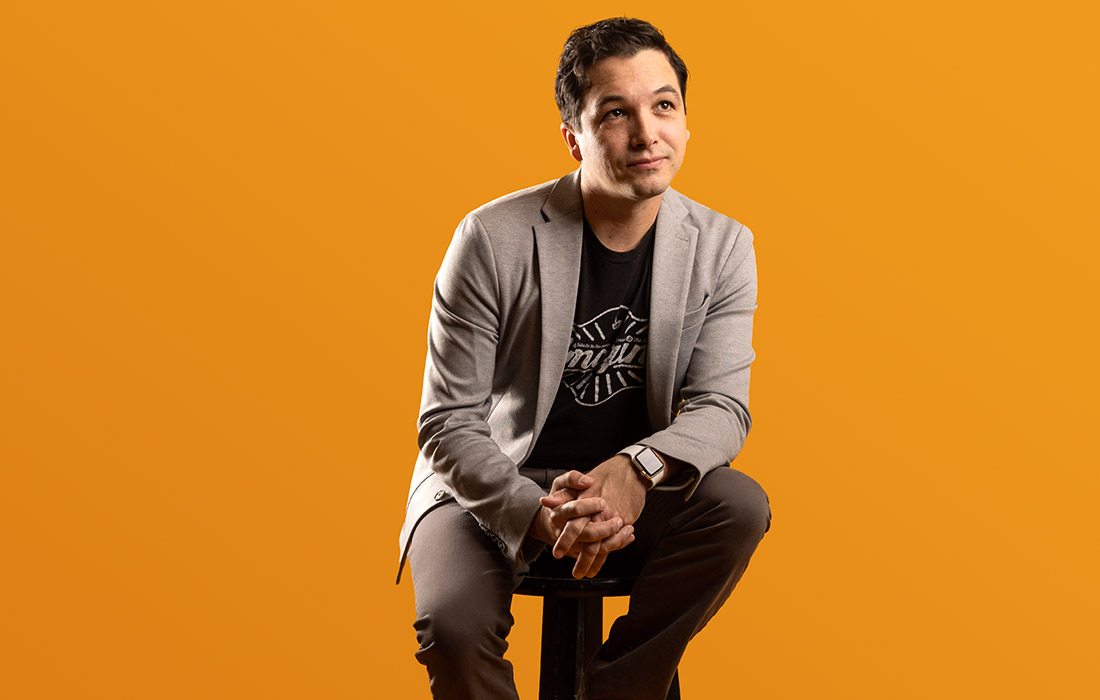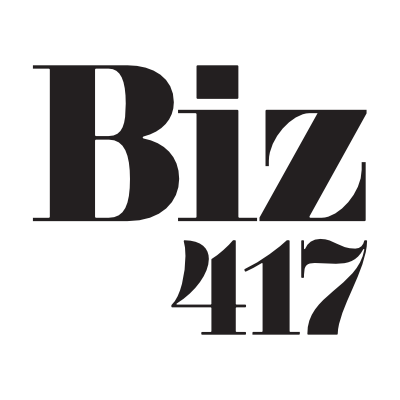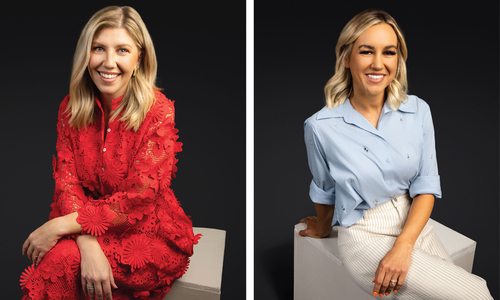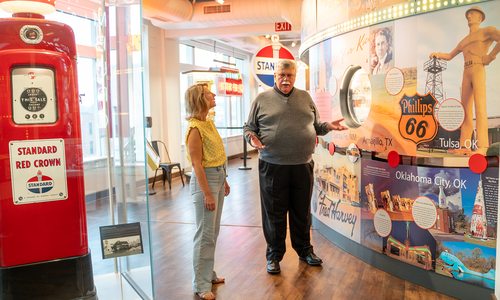
Lifestyle
Q&A with Seth Harrell
Last year, 417-lander Seth Harrell was selected as an emerging fellow by the Association of Professional Futurists and attended the first-ever Dubai Future Forum. We sat down to learn about his field and his experiences—and the future of Springfield.
By Lucie Amberg
Jan 2023

417 Magazine: “Futurist” may be an unfamiliar term for some people. How do you describe what you do?
Seth Harrell: The easiest way to describe it is to note that the uncertainty of the future is increasing. My job is to decrease the amount of uncertainty. My role is not to predict anything; we try to stay away from that. Most businesses focus on a three- to five-year strategic plan. It’s easier to make a five-year plan if you’re looking 10 years out. But how do you do that when things are so uncertain? Once you get to the five-year mark, data isn’t quite as useful because uncertainty becomes so great at that point. That’s where people like me jump in. Things will still be uncertain, but we know the underlying drivers in the world that are creating change. We can make plans and find opportunities in that.
417: How did you become interested in this field?
S.H.: I grew up in Springfield. I remember the Vision 20/20 Project that resulted in downtown being re-developed and great things like Jordan Valley Park. I was young at the time, and it opened my eyes that people were focusing on the long-term. Even in high school, I remember sitting in history class and wondering why we didn’t also have a class about the future. That seemed just as important as a history class to me since, as a teenage student, I was going to be living in that future. And then when I was an undergrad at Missouri State, I was a geography major, which introduced me to systems thinking. It’s a whole field of study about how things are connected to each other and how you can’t change one thing without changing another thing. How do those changes interact over time? And how can you map that out? I was fascinated.
417: Last fall, you attended the Dubai Future Forum at the new Museum of the Future in Dubai. What was that like?
S.H.: The first thing I have to mention is the museum. You’ve never seen a building like this in your life. It’s mindbending. I saw it for the first time at night. It was lit up and looked like a spaceship. Then, the morning of the conference, I was seeing people at breakfast that I’ve seen online, people who host podcasts and write journal articles—things I was assigned to read when I was in school. Foresight practitioners are spread out around the world, so just being around so many people who are involved in this industry and working on these thought-provoking questions felt like a huge validation. It was incredibly rewarding and energizing.
417: Was there a top insight that you came home with?
S.H.: Every panel wound up talking about borders. What are borders going to mean in the future? Digital technologies are allowing organizations to exist in non-traditional ways. We’re used to thinking: “On this side of the border is one thing; on the other side of the border is another thing.” But people are working internationally. We talked about space because it is a place that doesn’t have borders. When you think about the problems you’re dealing with in your business, how beneficial it is, even as a thought experiment, to try to imagine you had some aspect of your business in space? How would you deal with that? Obviously, that’s not a realistic thing right now, but it breaks down all these assumptions you have about how your business operates. Because in space there are no borders, and there isn’t law like we know it. Is there going to be an official language in space? How would people go about living day to day?
417: It’s easy to think about the future as something that happens in other places and then gets imported to us. How can we think about ourselves as being part of creating the future here in Springfield?
S.H.: In the futurist community, one of the guiding quotes we live by is: “The future lives on the edges of things.” What that means is that any time you find the edges—whether it’s two groups of people or two technologies that are butting up against each other—that’s where interesting stuff starts to happen. That can then filter out to the rest of the world and create the future. If you want to find the future now—where things will be in 30 years—find the edges of things. Springfield is a transportation hub. We’re centrally located in a circle that includes St. Louis, Kansas City, Tulsa, Little Rock and Memphis and because of that, we get a lot of traffic and economic activity coming from outside. Springfield has a history of being innovative in transportation. Everyone knows about the history of Route 66 and the innovations of diverging diamonds and things like that. If we want to evaluate Springfield in the future, I would say, “Where in Springfield is there an interesting interplay of business, technology and culture? Where are we on the edge of two cultures, technologies or types of business?” I know that sounds like an artistic way of looking at it, but that’s how we get to these interesting concepts of what the future could be.
417: Are you saying that while we all like to make data-based decisions, it’s hard to do that more than five years out because there are so many potential variables in play?
S.H.: We start with the hard data and go out as far as we can. At some point, it becomes so uncertain that data won’t tell you much anymore. The workspace becomes more qualitative. [Futurists] try to future-proof your strategic plan. For example, a lot of schools had strategic plans in place that might have been finished right as the COVID-19 pandemic started. How many of those plans had anything incorporated to allow for flexibility and changes with a wild-card pandemic? Our philosophy is that you need to build flexibility into those plans. We try to re-frame your idea of what your strategic plan should be to make it more easily achieve your goals—in spite of all the changes going on in the world.
417: This reminds me of the Great Game of Business management style. Developing contingencies and preparing for worst-case scenarios are components of that system, and it sounds like a futurist can help you envision what those contingencies and worst-case scenarios might be.
S.H.: Exactly. Scenarios are the heart of foresight. We try to take all this uncertainty and develop scenarios—usually three to five. You don’t want to do too many because it can be too much to think about, but it’s easy to carry three to four images about what your organization might be facing in your head. The goal of the scenario isn’t to predict exactly what’s going to happen but to broaden your thinking about what is plausible in the future. Hopefully, it challenges your assumptions about how business is operating in the present. If you challenge your assumptions, you can find your blind spots to make you more future-proof.












